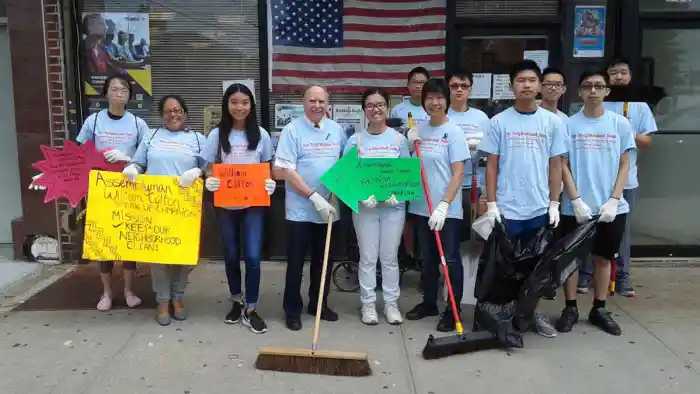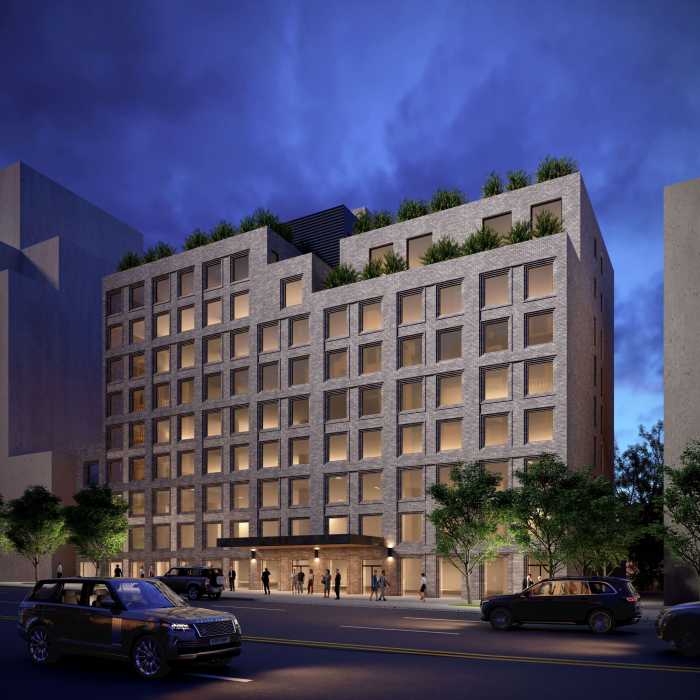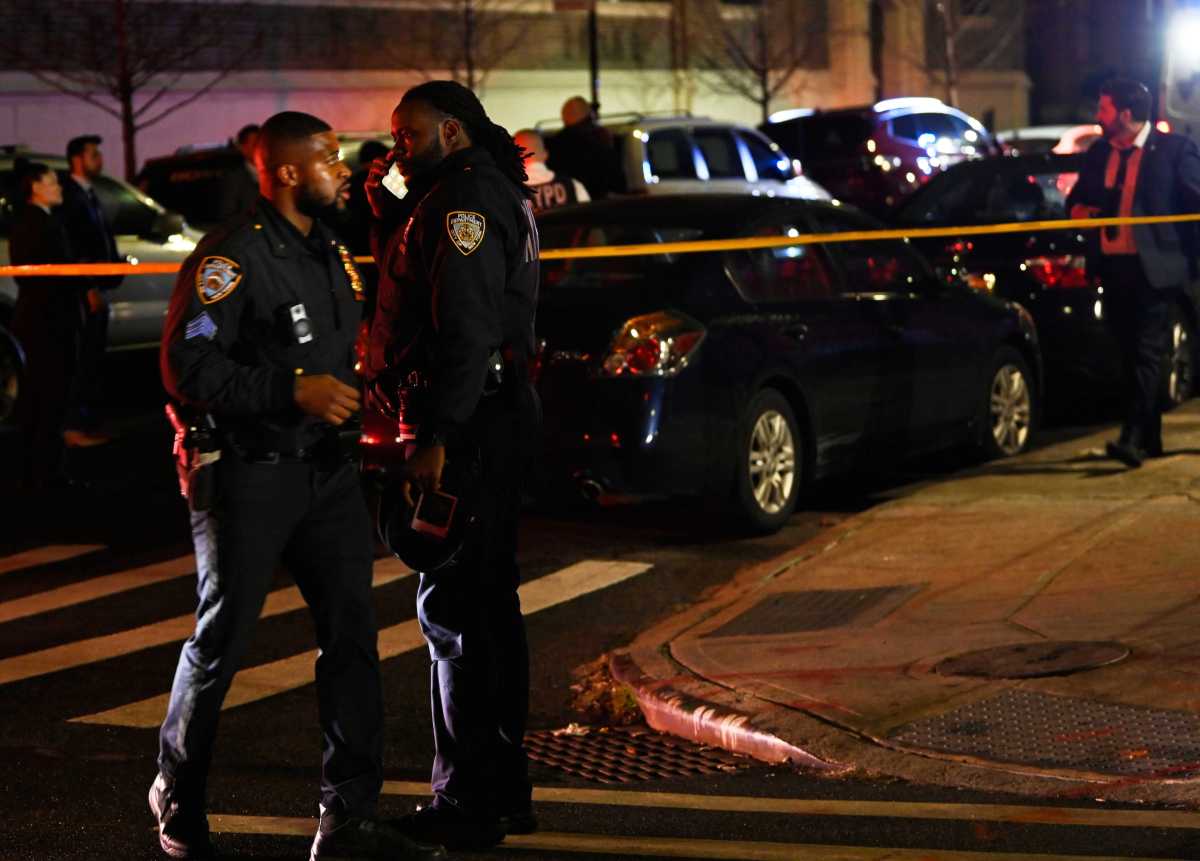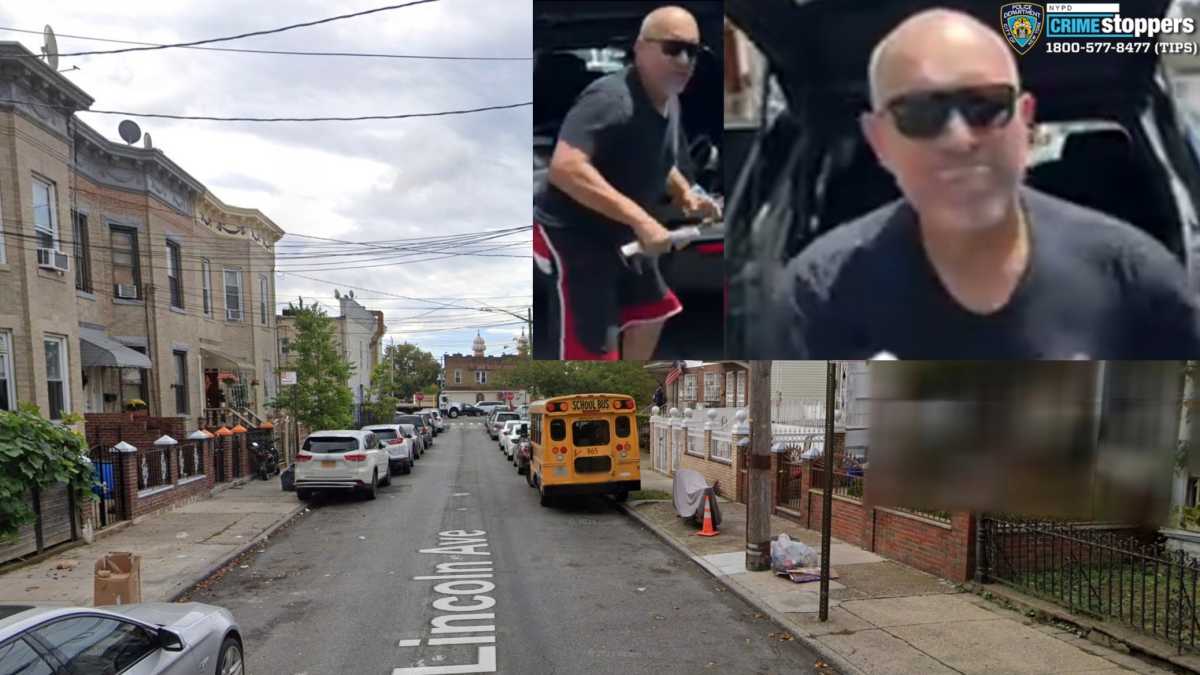A presentation of developer Bruce Ratner’s Atlantic Yards plan hosted
by community boards 2, 6 and 8 turned into a shouting match Monday night.
Members of the 800-person audience, both in favor of and opposed to the
development, yelled across the auditorium at New York City College of
Technology trying to overpower both Forest City Ratner Executive Vice
President James Stuckey, and the moderator, CB6 district manager Craig
Hammerman.
Before the meeting even began, it was obvious there was going to be trouble.
Develop-Don’t Destroy Brooklyn, one of the groups spearheading opposition
to Ratner’s plan for a basketball arena in Prospect Heights, joined
state Sen. Velmanette Montgomery to present an alternative plan, which
they are calling the UNITY project, outside the college a half-hour before
the meeting.
But the group’s hasty presentation of the design by local architect
Marshall Brown, was itself received with derision from hundreds of activists
with the New York chapter of the Association of Community Organizations
for Reform Now (ACORN), who arrived en masse on chartered buses.
Cordoned off by 84th Precinct police, they shouted slogans like, “What
do we want? Affordable housing. When do we want it? Now!” coaxed
on by Brooklyn ACORN director Bertha Lewis.
Other organized groups, such as a lobbyist who brought in the United Brotherhood
of Carpenters and Joiners of America, which has worked on project labor
agreements with Ratner’s company in the past, and residents of the
Ingersoll and Whitman public housing projects, also showed up, adding
to the melee as the people filed into the auditorium on Jay Street.
In private meetings with the developer, ACORN and other organizations,
along with the chairs and district managers of the three community boards,
have been drafting a community benefits agreement, or CBA, over the past
four months.
When word of the private meetings was reported by The Brooklyn Papers,
board members urged their board leaders to host a public hearing to address
issues of concern to the community.
While CB2 Chairwoman Shirley McRae defined the meeting as “not a
hearing” but a presentation, attendees were encouraged to sign in,
and handed index cards on which to write questions to be read aloud by
Hammerman after the presentation by Stuckey.
An outline for conduct was included in programs that were handed out,
urging the audience to be “courteous to all speakers,” forbidding
signage or visual obstructions and notifying attendees that the moderator
could edit questions for clarity.
Hammerman read letters from both the Empire State Development Corporation
(ESDC) — which is expected to implement eminent domain land condemnations
and be the governmental sponsor of the Ratner project — and the City
Planning Commission, in which officials of those entities stated they
could not speak about the project because they had not yet been assigned
any official role.
Another key player is the Metropolitan Transportation Authority, whose
11-acre rail storage yards are a key component of the plan.
“MTA did not have the courtesy to respond to us,” said Hammerman,
and many concerned citizens booed and hissed loudly.
The ESDC, whose officials have acknowledged they are in negotiations with
the developer, provided legal information outlining the public hearing
process for state-level developments that involve eminent domain —
a key issue among opponents of the plan — which Hammerman read aloud
and offered to provide to interested parties.
Also present at the meeting was former Councilwoman Una Clarke, who sits
on the ESDC board and came as a representative of Gov. George Pataki.
Clarke left the meeting shortly after Stuckey’s presentation, and
after only four questions had been posed to him from members of the public.
Assemblyman Carl Andrews and Councilwoman Letitia James were also present,
along with members of BUILD and the Downtown Brooklyn Advisory and Oversight
Committee, both of which are community organizations represented in the
benefits agreement negotiations.
Stuckey’s presentation varied little from the sketchy plans shown
at an April meeting, but for the first time he outlined specifics of the
affordable housing component of Atlantic Yards, specifying the number
of units that would be reserved for various income levels.
Under the housing plan, which ACORN helped devise, 800 units would be
available for families designated as low income. Two hundred of those
would go to families earning $18,840 to $25,120 a year, and 600 to earners
of between $25,120 and $31,400 annually.
Another 1,200 units would be for middle-income families — 400 each
to $31,400 to $62,800, $62800 to $87,920, and $87,920 to $100,480.
The project, as proposed, would have a total of 4,500 units.
Stuckey also announced that he expected ACORN to be chosen as the lead
community sponsor for assigning and advertising the affordable housing.
One audience question asked why the community boards hosted the meeting
if the project was to be implemented by state agencies.
“We were the only government agencies willing to put on a meeting
for the communities,” answered Hammerman.
Stuckey also hinted that publicly financed infrastructure costs might
be close to $500 million, when he said the proposed $2.5 billion project
could reach $3 billion after such improvements, which he hoped the city
and state would cover.
“We are simply asking the city to do what it normally does to build
roads, to build sewers,” said Stuckey. “The city gets far more
than infrastructure improvements out of this project,” he said, and
cited the 15,000 construction jobs that the project is projected to provide.
When a carpenter asked how his longstanding Fort Greene business factored
in to those jobs, Stuckey said that was the point of the CBA negotiations,
to help them reach into the local community.
An outburst stirred at the back of the room, starting with former BUILD
member Darnell Canada, who supports the project but wants to see jobs
and other benefits guaranteed to the community. His exhortation was soon
surrounded by chants of “Let him speak! Let him speak!” as Hammerman
continued to talk over the rising noise.
“If I don’t speak, then there ain’t nothing being said!”
shouted Canada. “We want jobs! You’re all complaining about
this and that, you know what? We don’t care about it. We’re
all worried about eating. You all are talking about what you don’t
want, but we want jobs!”




















